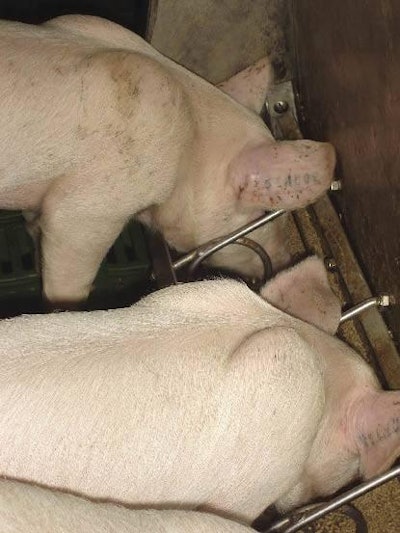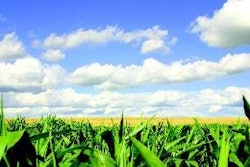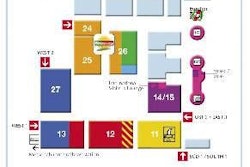
Only a pause in the growth pattern
A report that appeared last year presented the third Agricultural Outlook review prepared jointly by market analysts with the Organisation for Economic Co-operation and Development (OECD) and the Food and Agriculture Organisation of the United Nations (FAO), assessing likely developments in world meat markets over the period 2007-2016. Its authors proposed that global pigmeat production looked ready to grow from around 107.5 million metric tons in 2006 and 110.8 million tons in 2007 to reach 116.4 million tons in 2010.
By 2012, said these forecasters, pork production worldwide could be breaking through the 120 million tons/year barrier.
First results for 2007 from a number of countries suggest these predictions may need to be revised. Instead of the 3.1% increase that the agencies projected to occur between 2006 and 2007, the global output of pork probably showed little change from one year to the next.
On the other hand, there is no reason to believe that the growth potential has disappeared. These annual reports on major world agricultural commodity markets have been able to take account of factors such as the enlargement of the European Union and the repercussions from using grain to make biofuel production. They assume steady global economic growth together with a slowdown in the expansion of the world's human population. But this may actually under-state the extent of the extra market we should expect to see for all meats in the coming decades.
The United Nations has also said the demand for animal products is going to double over the next 20 years. It pointed out that the size of the world's population continues to grow at a substantial rate, equivalent to adding another 78 million mouths to feed every year. What is more, the total of over 8 billion people reached by 2030 will include at least one billion more consumers of meat in the emerging mega-economies such as India and China, as income growth changes the pattern of protein consumption.
Chinese decrease hits global inventory
Pig numbers seem to respond more to disease outbreaks than to high feed costs. While there are still gloomy forecasts that the sow herd in some places may soon be cut by up to a quarter or even a third, the reality can be seen already in the reduction being measured for 2007 in countries where diseases were especially difficult.
The most obvious example of this must be China. Last year was a time of low pork supplies and high prices for the Chinese pig industry. A sharp fall in the number of pigs marketed was blamed on high mortality rates from an especially virulent form of PRRS, although some suggestions persist that other ailments may also have been involved.
Our markets-watching section this month tells the story in rather stark figures. The accuracy of some data for pigs in China has always been disputed, but the national inven-tory around the start of this decade was probably in the region of 450 million pigs. Counts published by the US Department of Agriculture's foreign service have shown the Chinese herd's size at around 463 million for the end of 2002, just over 466 million for 2004 and more than 503 million for 2005.
That was when the expansion stopped, however. The statistics we publish in Market Intelligence also made use of USDA datasets. These suggest the Chinese total for pigs on farm had fallen to about 494.5 million by the final weeks of 2006 and ended last year at approximately 470 million.
Losing in excess of 30 million pigs from the national herd in 2 years would be remarkable anyway. But it becomes even more significant because of the huge impact China has on pig numbers globally. In very broad terms, the Chinese pork sector contains practically half the world total for pigs.
Therefore we have seen more than simply a 7% drop in inventory for China since 2005. For the first time in years, we also have to acknowledge that the trend in world pig numbers has changed from annual growth to a year-on-year reduction.
Europe's increase in pig feed output
Only recently, I was speculating here whether the high price of grains would have the effect of stimulating more on-farm feed mixing by pig units. Some new figures have given the answer, at least for Europe. Commercial feedmills in the European Union countries actually produced and sold 2% more feed for pigs in 2007 than in 2006.
The people who have compiled these figures say that feed sales by mills across Europe were especially strong during the final 3 months of the year. They believe this was due to the high prices for the raw materials to go into feeds. With cereals so expensive, they tell me, it seems that pig producers and other livestock farmers were motivated to buy the feeds they needed from an industrial mill rather than producing it themselves.
Germany platform for farm-gas momentum
Equipment for the on-farm generation of gas and other forms of energy has provided one of the highspots of the European farm mechanisation market over the past year or so, commented the head of German agricultural machinery association VDMA while attending the Agritechnica exhibition in Hannover during November. Sales growth for farm machinery is rather slow by past standards, in Europe and North America. But the increasing importance of bioenergy has provided some impetus.
Exhibition organiser DLG arranged a separate BioEnergy Center with over 250 specialist exhibitors as part of the Agritechnica programme. It plans to include a similar section also at EuroTier 2008. Almost coinciding with last year's Hannover event, there was another illustration of the strength of the biogas market in Germany when a company in the Big Dutchman group announced its biggest-yet order. BD Agro Renewables GmbH will be working with a second German company called Biostrom Energiesysteme to build biogas installations at about 40 locations in Germany over the next 2 years in a series of projects valued at 46 million.
An independent market review has concluded meanwhile that Germany can claim to have as many as 3000 plants for anaerobic digestion already in operation, more than in any other part of the European Union.
Circo research can be justified
Various responses reached me quite quickly after my remark in this column about hearing from an eminent veterinary scientist that PMWS should no longer be regarded as a threat because of the success of circovirus vaccines. Several people wondered why the PCV2 should still be receiving large funds for research, if the battle had really been won.
Certainly there continue to be big projects at the research level, with substantial financing behind them. In Europe, the major collaboration agreement between veterinary centres backed by European Union funds is not due to end until 2009. Some new initiatives in individual countries of Europe and North America were announced in 2007. For example, the Canadian government committed to putting C$76 million over the next 4 years into a campaign against production diseases in pig units, including those associated with the porcine circovirus PCV2. It has been called Canada's largest-yet investment in fighting health challenges to the pig industry. Also started last year was an interdisciplinary project in the UK.
Research workers on both sides of the Atlantic insist that the advent of effective vaccines is no reason to stop the investigations now. PCV2 is an important virus that gives rise to economically devastating disease. The more we can discover about it, the better we shall be able to control it. Also, the knowledge obtained should greatly assist our preparation for the next round of emerging health threats. Whatever they may be, such new challenges will undoubtedly arise.
Warm wishes for 2008
Let me end this month's column by wishing all of you a 2008 that is rewarding and satisfying for your business. There can be no doubt about the challenges we face in the coming year. But market conditions will undoubtedly improve. We produce the world's most popular meat and the world needs to eat.PIGI

















